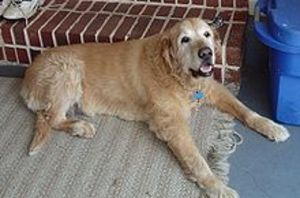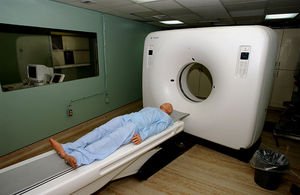With advances in dog nutrition and veterinary care, dogs are capable of living well into their teens (depending on the breed). Just as elderly people get often become progressively senile, so too do dogs. There are many distinctive signs of canine cognitive dysfunction syndrome, popularly known as “doggy dementia” or “doggy Alzheimer’s.” Veterinarians tend to remember these signs with the anocrym DISHA, which is short for Disorientation, Interaction, Sleep problems, House-soiling and Activity level changes.
Disorientation
It is only after years of observing a particular dog can that person detect when the dog seems to be at a moment of extreme confusion. The dog may suddenly get lost in a familiar neighborhood, home or yard. These dogs have to be kept leashed or confined because they may wander away and forget the way back home. The affected dog may try to find the doorway to a door he has gone in and out of for years.
Perhaps the most obvious sign is when a dog gets stuck in a corner. It is as if they cannot remember that all they have to do is back up in order to free themselves of the two walls. These dogs need to be gently lead out of a corner once they get caught in it. Some dogs will even seem to get caught on a section of flat wall, as if expecting a door to magically appear.
Interaction
The affected dog will suddenly have problems in the way she responds to strangers, humans other animals. The dog may not seem to recognize a former friend and begin barking as if the friend were a stranger. A dog known for barking at strangers may suddenly quiet when they come by. A dog may seem scared of the neighbor’s dog he has played with for years.
Sleep Problems
For many years, the dog has slept at night and been awake during the day. Now, suddenly, the dog is sleeping all day and pacing all about the home all night, as if wondering why no one else is awake. No matter what the dog’s usual sleeping pattern is, somehow it’s reversed.
House-Soiling
This is usually the first sign an owner notices. Whenever a dog has a house training accident after years or months of successfully doing her business outside, she should be taken to the vet. This sign does not just happen in cognitive dysfunction syndrome, but in many other serious but treatable illnesses such as urinary tract infections and diabetes. Other early symptoms of diabetes include drinking far more than usual and a sudden increase in appetite.
Activity Level Changes
This is another sign that a vet may not detect, but a person living for many years with the dog can. The dog suddenly will no longer seem interested in the usual toys or suddenly stops grooming himself or looses interest in eating. It’s as if the dog is so depressed, he is silently saying, “What’s the point of it all?”
The dog may also be experiencing hearing loss, so that even if you clap your hands the dog does not respond. This can exasperate the other symptoms of canine cognitive dysfunction.
References:
Dog Owner’s Home Veterinary Handbook, 4th Edition.” Debra M. Eldredge, DVM, et al. Wiley Pubishing; 2007.
The Whole Dog Journal. How to Care for an Older Dog.” Lisa Rodier. December; 2008. http://www.whole-dog-journal.com/issues/11_12/features/Caring-For-An-Older-Dog_16086-1.html
Pet Place.com. Cognitive Dysfunction in Elderly Dogs.” Dr. Nicholas Dodman. http://www.petplace.com/dogs/cognitive-dysfunction-in-elderly-dogs/page1.aspx



